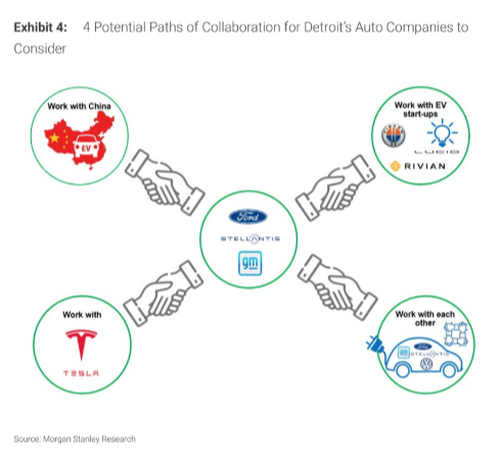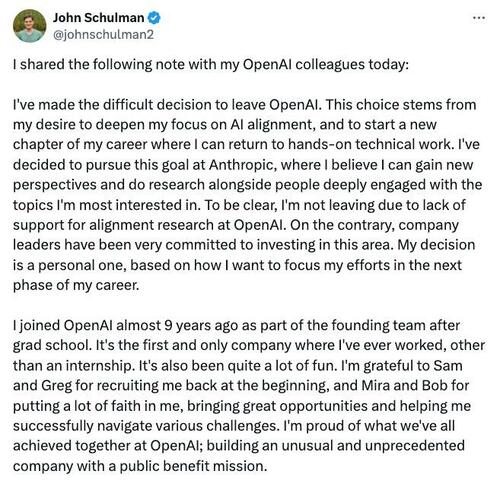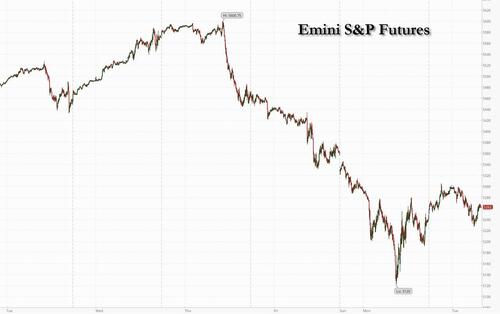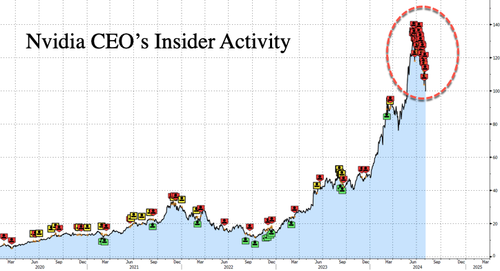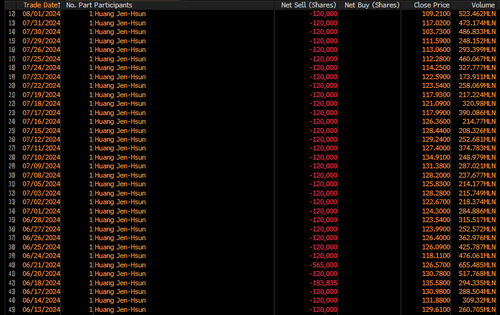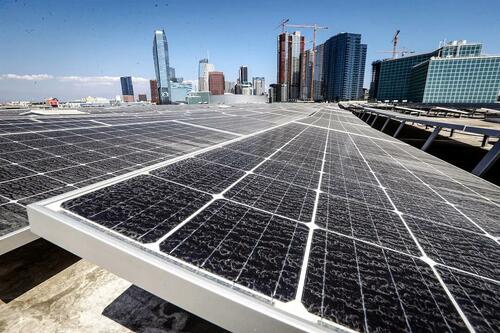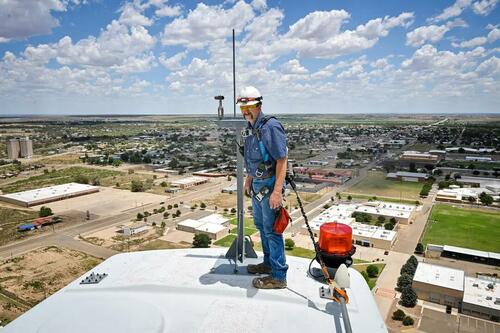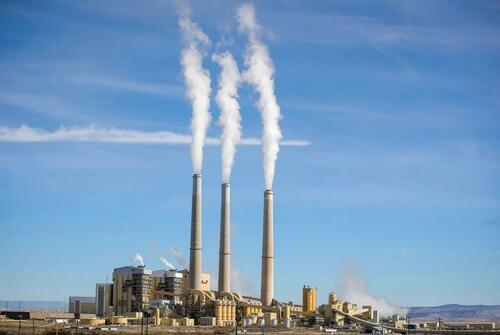Authored by Lawrence Wilson, Jacob Burg, and Janice Hisle via The Epoch Times,
The Democratic Party officially nominated Vice President Kamala Harris for president late on Aug. 5 when delegates finished virtual voting.

Harris and former President Donald Trump are now deadlocked in a race that has taken presidential politics into territory uncharted in the modern era.
Within three days in late July, Trump survived an assassination attempt on the campaign trail, was formally nominated by his party, and named Sen. JD Vance of Ohio as his running mate.
Less than a week later, President Joe Biden withdrew from the race and endorsed Harris. She became the Democratic nominee on Aug. 5 without winning a single primary election, something that hasn’t happened since 1968.
“[It’s] like a giant jigsaw puzzle, with the pieces changing practically every day, or at least a couple times a week,” Susan MacManus, a political scientist from Florida, told The Epoch Times.
Ken Kollman, a political science professor at the University of Michigan, made a similar comment.
“Things have gotten really scrambled,” Kollman told The Epoch Times.
Despite these unusual circumstances, the old rules of politics still apply, according to political experts. The winner will likely be the candidate who can do three things well: maintain their core constituents, present an issues-based appeal to independent voters, and turn out the vote on Election Day.
Here’s the status of the race to date, and what each side is doing to gain an advantage.
Neck and Neck
Polling shows that the race is essentially tied at this point. Harris and Trump are each polling within the margin of error in national polls.
An Aug. 5 polling average compiled by FiveThirtyEight has the vice president up 1.7 percent nationally. A TIPP Insights poll, also released Aug. 5, shows Harris up 1 point.
The candidates are running close to each other in most of the battleground states of Pennsylvania, Michigan, Georgia, Wisconsin, Arizona, Nevada, and North Carolina, which could determine the Electoral College vote.
Recent polls have shown Harris with a slight lead in Pennsylvania and Wisconsin, and Trump leading in Arizona, Nevada, and North Carolina. Other polling shows a dead heat in Michigan and Georgia.
Harris’ entry into the race significantly changed the picture, as Trump had been leading Biden by several percentage points. However, the bump in polling could be a honeymoon effect based on her entry into the race, according to TIPP Insights.
Analysts agree that the race is still very much up for grabs. To negate Harris’ momentum, Trump will have to settle on new messaging, experts told The Epoch Times.
Trump Reboot
The Trump campaign appears to be searching for new messaging now that Biden has left the race, according to Aaron Dusso, a professor of political science at Indiana University, Indianapolis.
“I think they were surprised, like most of us, that Biden chose to step aside,” Dusso said. “They weren’t really prepared for that.”
To regain traction, experts say the Trump campaign must move beyond personal attacks and general promises to mount an issues-based campaign.
Personality-based campaigning will benefit neither side, according to MacManus, adding that both candidates would be wise to address “how they are going to solve a problem, and how their opponent is not.”
American political history professor Jeff Bloodworth said the Trump campaign should focus on this question: “Are you—or the world—better off” under the Biden–Harris administration than you were during the Trump administration?
“That was the subtext of the Trump–Biden campaign. That should be the text of the Trump–Harris contest,” said Bloodworth, who teaches at Gannon University in Erie, Pennsylvania.
“It’s the economy,” said Edwin Benton, a political science professor at the University of South Florida. “Always, what’s on the mind of the public is their pocketbook, economic issues.”
There is evidence that the Trump campaign is shifting its message in that direction. A political action committee supporting the campaign has aired a series of ads tying Harris to high grocery prices, rising crime rates, and the surge of illegal immigrants.
Harris Momentum
Harris has gained momentum in part because she is new to the race. Multiple experts said her greatest advantage may be her youth. At age 59, she entered a race in which age had been a significant handicap for her predecessor. She now appears as the fresh face running against Trump, who is 78.
In campaign speeches, Harris has presented herself as the candidate for a new generation.
“This campaign is about two very different visions for our nation: one focused on the future, the other focused on the past,” she told rallygoers in Atlanta on July 30.
The obvious line of attack for the Trump campaign is to identify Harris with her predecessor, experts said.
“Her biggest liability is her link to the Biden administration, a pretty unpopular president,” Kollman said.
“[Biden’s] weaknesses are her weaknesses,” Dusso said. “Continue to tie those together.”
In an email to The Epoch Times, Karoline Leavitt, national press secretary for the Trump campaign, said Harris must defend her support for the Biden record, including inflation, immigration, and foreign wars.
The Epoch Times requested comments from the Harris campaign but did not receive a reply by the time of publication.
Winning, Losing Issues
Both candidates have issues they can win with, and both would do well to present their core issues in a problem-solution formula, pundits said.
Harris’ strongest issue is abortion access, which has become a winner for Democrats following the overturning of Roe v. Wade.
“That, I think, has really been a major change in American politics,” Kollman said. He noted that abortion access is now the single most important for Democrats—and many Republicans—in the way the pro-life cause was for decades.
Trump holds a number of strong cards, experts said. Immigration continues to be a winning issue for Republicans, despite Harris’ attempt to nullify it by pointing out that Trump opposed a bipartisan border security bill earlier this year, which went on to fail in the Senate twice.
International affairs remain a strong point for Republicans also. According to Benton, the Biden administration’s position on Ukraine and Israel has been confusing. On the one hand, the administration has advocated military aid to Ukraine and Israel. But it has attempted to moderate the effect by prescribing how the weapons should be used.
“Joe Biden and Harris tried to play at both ends, and you can’t do that,” Benton said.
The winning formula in politics remains the same, according to Dusso: “Point to a problem, and say, ‘I have a solution.’”
Ground Game
Both campaigns have mounted efforts to rally voters in swing states. The Harris campaign has stated that it now has a network of staffed field offices in most swing states, and more than 500,000 volunteers focused on mobilizing voters, according to the campaign’s battleground director, Dan Kanninen.
The Trump campaign’s battleground initiative, Trump Force 47, has engaged tens of thousands of volunteers, Leavitt told The Epoch Times by email.
“We have paid staffers and volunteer-powered field programs in every battleground state, and they are expanding daily,” she said.
Both campaigns have impressive fundraising totals. As of May 24, the Harris campaign had about $96 million on hand. The Trump campaign had a balance of $128 million.
The Harris campaign said it has raised $310 million in July. The Trump campaign reported $137 million raised in July.
Voter Turnout
In the end, the race may come down to which candidate can rally his or her core voters on Election Day. For Harris, that means rallying younger people, who are historically the least likely to vote.
For Trump, that means turning out rural voters, especially men, who are also infrequent voters, according to Kollman.
Latino voters have been a historic demographic for Democrats but have been trending toward the Republican Party. Experts had mixed opinions on whether the Latino vote would shift decisively toward Trump or move back toward the Democrats.
Trump has also made inroads among black voters, but the experts are uncertain whether that will produce enough movement, especially in swing states, to affect the election.
Biden won a number of votes from disgruntled Republicans in the last election, according to Kollman. Harris has launched a campaign to round up those voters, but it’s uncertain whether she’ll inherit those who defected for Biden in 2020.
Despite the relatively brief window remaining in this campaign, it will take time for the dust to settle after Harris’ entry into the race.
“Everything’s brand new,” Dusso said, adding that it will take a couple of weeks to figure out where the polling will land after voters get used to Harris as a candidate.
The candidates now have less than three months to settle on the best issues and messaging to present to the voters. The general election is Nov. 5.





